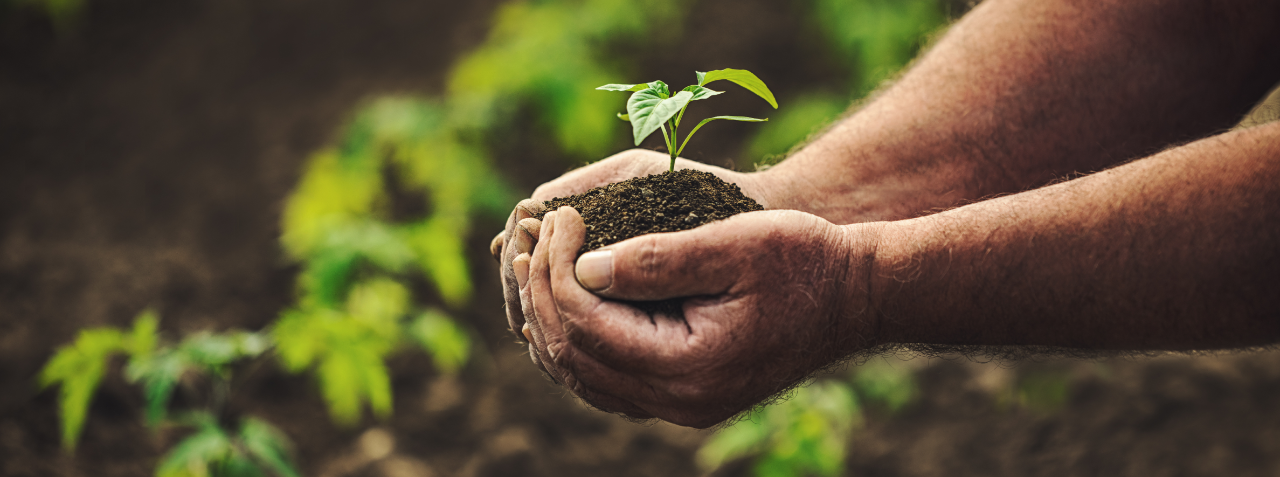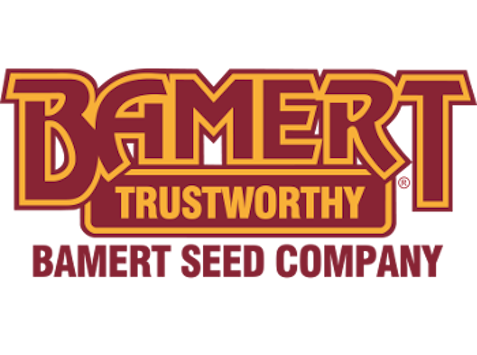
AG Economists Compare Cost of Corn Production in the US and Brazil
Member News
Growout Update
Invoices have been mailed to winter growout participants. Progress of the growouts is reported to be excellent. As a reminder the TSTA Board of Directors made a policy decision last spring that no growout information would be forwarded to participants until payment for the growouts was received from the respective participant. We sincerely appreciate your prompt attention.
The Texas Seed Trade Association Annual Membership & Policy Meeting Scheduled for February 11-13, 2024. Registration and Hotel Reservations are Live.
We'll do our best to build on a very successful format and timely topics from last year. We are investigating methods to assist your efforts protecting intellectual property from illegal brown bag seed sales. Other topics include:
- Plant Variety Protection advances over the last year
- Trends in seed segments; where's the market headed for members?
- Seed treatment and advancing regulation of treated seed
- Cover crop market development linked with government programs
- How can we help limit brown bag seed distribution in Texas?
Registration is open and can be completed using this link.
Hotel reservations can also me made via the link.
The TSTA Board of Directors will meet on Tuesday February 13, in the morning.
Don't forget to bring an auction item for the scholarship fundraiser at the President's Reception & Dinner Monday evening.
AMERICAN FARMLAND TRUST RELEASES MANUAL ON CARBON MARKETS AND CLIMATE-SMART PRACTICES FOR FARMERS
Source: American Farmland Trust news release
Editor's Note: One of the topics for our upcoming annual meeting is cover crops. Lots of questions about how they fit in relatively more arid climates, like Texas, as opposed to Iowa or Illinois. A closely associated subject is carbon markets and how farmers might profit from cover crop culture or utilization of other restorative or conservation practices. There are a number of companies in the business of coaching the profitability of carbon sequestration, including some members of the Texas Seed Trade Association. We thought you might find the following publications of interest on carbon markets. Please keep in mind carbon markets are only one commonly stated possible benefit of incorporating cover crops into a farming operation. We are not endorsing American Farmland Trust but we found these concise guides informative and accurate. If you click on the link below it will take you to an overview webpage. If you scroll down that page you'll find two downloadable documents we suggest you take a look at if you're curious about how carbon markets work and might work for you and your customers.
(Washington, D.C.) American Farmland Trust published Top 10 Things You Wanted to Know About Ag Carbon Markets a guidebook for farmers, agricultural advisors, and conservation professionals seeking in-depth information on agricultural carbon markets and climate-smart practices.
The guide defines agricultural carbon markets, or an environmental market developed to meet growing demand from corporations with the supply of carbon credits from the agricultural sector. Farmers are paid for reductions in greenhouse gas (GHG) emissions and soil carbon sequestration on their land, and corporations use the credit to offset emissions. Farmers can use climate-smart practices, including no-till, cover crops, and nutrient management to provide economic and environmental benefits to their farms, such as reduced input costs, increased yield stability, and greater soil health.
"This guidebook aims to help farmers better navigate emerging agricultural carbon market opportunities," said Michelle Perez, AFT Water Initiative Director, and guidebook co-author. "Corporations with sustainability goals are trying to satisfy some of their targets by purchasing carbon credits, some of which can be generated by farmers who adopt climate-smart practices. However, these agricultural carbon markets have been repeatedly described as the 'Wild West' because the programs are paying for different things in different ways, with different expectations."
The guide lists ten questions on how agricultural carbon markets work and practical ones that are top of mind for farmers. For example, it defines various concepts, such as what climate-smart practices are, and how agricultural carbon markets work. The book also describes the federal government's role in carbon markets and legislation passed to support these initiatives.
Finally, the guidebook answers logistical questions, including participation eligibility, required farmer information and access, contract duration, and other information.
"Our guidebook is a great example of how AFT is working with agricultural carbon markets, federal and state conservation programs, and the agricultural conservation community to ensure that farmer interests are reflected, environmental integrity upheld, and climate-smart agriculture is expanded," said Perez.
Access the Top 10 Things You Wanted to Know About Ag Carbon Markets here

Dutch multinational East-West Seed is structurally doing its own development aid in the tropics. The seed breeder spends millions on training small farmers in horticulture.
By the end of next year, the company expects to have trained one million small farmers in the tropics. It is one of the largest seed suppliers in the world, but virtually unknown in the Netherlands: East-West Seed. From their Dutch office in a terraced house in Enkhuizen, the 89-year-old founder Simon Groot and his son Rutger call on companies, governments, and action groups to join hands for more food security in the world.
"We are a commercial company, whose mission is to improve the lives of small farmers," says Rutger Groot. "Because poverty is society's greatest enemy," says Simon, seated next to his son Rutger, quoting the Dutch winner of the first Nobel Prize in economics, Jan Tinbergen.
A livable earth
"I am a true disciple of Tinbergen," continues Simon . With shining eyes, he says, "Tinbergen's book is always here. I want the young people to read it." As proof, an employee pulls out three copies of Tinbergen's A Livable Earth within seconds. One thumbed, broken edition, one fresh reprint, and one for the photographer.
On the table in the small office are a bunch of yardlong beans , a small prickly fruit, and two green bubbled fruits the length of a cucumber, but twice as thick. "Those big ones are sopropos," Simon says. "I'm still looking for an etymologist who can explain where that Surinamese name comes from." "Bitter gourd it is in English," says Rutger.
Number one in papaya
Sopropos and yardlong beans explain why the great East-West Seed (EWS) is so unknown in the Netherlands. They are vegetables that are missing from almost all supermarkets here, except for the ‘tokos’ (shops with mainly Asian food products). "The sopropo is by far the most important product in our range of vegetable seeds," Groot senior explains. But the sopropo does not thrive in the Dutch climate. EWS sells sopropo seeds to farmers in tropical countries in Asia and Latin America.
The same goes for yardlong beans. "We are the largest supplier of hosiery seed in Indonesia - the world's largest hosiery producer," says Senior. Junior gives the example of the papaya fruit: "In papaya seed sales, we are number one in the world." These are all tropical plants, also grown in greenhouses in the Netherlands.
Five hundred trainers
Operating in 75 countries, the company combines seed sales to smallholder farmers in the tropics with farmer extension training programs. In 10 major countries, including Bangladesh, the Philippines, Thailand, Indonesia, Nigeria, and, most recently, Ghana, the company selects trainers who can explain to farmers, among other things, that it makes a huge difference if you do not scatter vegetable seed loosely over the land by hand, but care for it.
Their foundation, East-West Seed Knowledge Transfer Foundation, now employs 280 such trainers. The program began in 2016 by retraining 12,000 farmers. That's now 150,000 farmers annually. "We are aiming for 500 trainers in five years," says Rutger Groot, president of the foundation. By the end of next year, he expects to have trained 1 million small farmers in the use of the company's slightly more expensive but better seed.
Slavery or agri-business
Why this focus on small farmers? "There are 500 million small farmers in the world, producing 70% of the food in Africa, for example. If you help them grow food more efficiently, it has so many direct returns," says Rutger. "If young people see that agriculture is not a kind of slavery, but an agri-business with which they can make money, then they see that they have a future," he continues. "Then they won't all have to flee desperately to Europe," says his father.
The duo distilled a series of anecdotes about the impact they have seen from their combination of commercial and private development aid. Like the refugee camp of 150,000 South Sudanese people in northern Uganda, where EWS trained refugees. "There are now thousands of vegetable gardens there. The people have better food, sell half their produce and have regained their pride," says Rutger.
Mango leaf seed tray
Another example: in northern Nigeria last year, a farmer refused to plant EWS' more expensive seed in separate pots because he simply did not have those pots. Rutger: "I pointed him to the mango trees. You can fold a bag from the leaves, if you stick a stick through it you have seed trays." The farmer didn't have time for that. "Then the farmer's wife said she wanted to do that. She is already running a commercially successful nursery for plants for dozens of farmers in the area."
In 2019, Simon Groot won the World Food Prize, a prestigious American award. Microsoft-tycoon Bill Gates spoke in praise at the ceremony. Media reports suggest Gates is sponsoring EWS. "No, we have had no actual funding from him," Rutger says. "But I did have confrontations with his staff," his father concurs. "Who demanded that we be able to calculate in advance how much economic growth our work will generate before they would sponsor us. I refused to do that. It is impossible to calculate that in advance."
Tens of billions of euros
In hindsight, however, the effect often turns out to be significant. Simon: "A retired researcher from Wageningen now calculates the added value of the improvements we have brought about in Indonesian horticulture. That already turns out to amount to tens of billions of euros of extra gross domestic product." Simon again quotes Tinbergen and his recipe against poverty: "Market growth is the only growth that matters."
Impossible demands also came from China. China demanded the genetic source material for improved vegetable varieties. "Then let's not," was Simon's response. How does East-West Seed justify working in dictatorially ruled countries such as Myanmar? "We don't work with governments, but with farmers," says Rutger. "A universal value is that people need food and a decent income. We are convinced that commerce and philanthropy go together just fine." Simon: "Private equity is primarily about money. We don't think that's the
most noble motive in the world."
Family business
EWS contributes 1.75% of its sales to the East-West Seed Knowledge Transfer Foundation, which aims to make farmers in the tropics more productive. EWS turnover was over €180 mln last year. So the gift to the foundation was over €3 mln. Since 1990, EWS has had the joint venture Ewindo in Indonesia with Enza Zaden, a large industry peer from Enkhuizen. Simon Groot says he hesitated for a long time to invest in Indonesia because of the Dutch colonial past. Groot started EWS in 1982 after selling his stake in the family business Sluit & Groot, also a seed breeder and now part of Syngenta. He was almost 50 by then.
Of the now 2,800 employees, only a few work in Enkhuizen, where the parent company is still based. Steering global operations is new CEO Jean-Christophe Filippi from Bangkok. Filippi is the first non-Dutchman at the helm of the West Frisian seed company. Meanwhile, despite his advanced age, Groot is still involved with the company daily, although these days he is no more than "honorary chairman of the supervisory board. He has since passed on the shares to his four children. Together, the family owns a majority stake in EWS. The rest are owned by local partners in the Philippines and Thailand and a first-time employee.
Editor's Note: We hope you found this article as intriguing as we did. It's an interesting model and we imagine it took lots of work to get it on the ground and lots of continuing work to keep this network moving forward. This level of customer service and dedication to demonstrating value to the end customer, the farmer, is not common in the seed industry. Nevertheless it seems to prove profitable for those willing to follow this non-traditional path to seed sales.
Factoids
by Nick Paulson and Gary Schnitkey, Department of Agricultural and Consumer Economics, University of Illinois
Illinois crop budgets for 2024 have been revised from their initial release in August (farmdoc daily, August 29, 2023). The main revision in the budgets is a reduction in the corn and soybean prices assumed for both 2023 and 2024, resulting in lower return and profitability projections.
Current farmer return expectations are negative for both corn and soybeans across all regions for 2024 for cash rented land at average cash rent levels, suggesting cost adjustments will be needed in 2024 and beyond.
As is always the case, actual returns can vary from projections made this early in the year.
Editor's Note: The newly revised projections for "profitability" of Illinois corn and soybeans are split across four regions of the state. The three more northerly regions projections are for losses averaging $109 per acre. The fourth region, Southern Illinois, is projected at a negative $53 per acre. One can imagine it's difficult to get excited about putting in a crop for the purposes of negative cash flow. Surely the ag lending community isn't overly excited about these prospects. Inputs are up but the report primarily cites price erosion. Understanding it's only a cup in the bucket, China bought over six times "less" corn from the US last year compared to 2022, though soybean sales to China were brisk. China is actively courting Brazil as their preferred corn and soybean provider and only bought US soybeans last year when Brazilian stocks ran low. China is endeavoring to widen their trade gap with the US to strategically thwart an adversary. Why are we still buying things labelled "Made in China?"
AGRI-PULSE SURVEY REPORTS WHO FARMERS' SUPPORT FOR PRESIDENT
Agri-Pulse reports:
Farmers and ranchers believe the nation is on the wrong track, and a strong plurality support electing Donald Trump to another term as president, according to a poll commissioned by AgriPulse of producers across the country.
Some 39% of the 605 farmers surveyed by the Stratovation Group said they would most likely vote for Trump, with Florida Gov. Ron DeSantis second at 19%, former South Carolina Gov. Nikki Haley third at 13%, and President Joe Biden trailing those three Republicans at 8%. Some 61% of the farmers identified as Republicans, and 45% of those favored Trump, with 25% preferring DeSantis, followed by 18% who favor Haley. Vivek Ramaswamy was the pick of 8%, while former New Jersey Gov. Chris Christie was selected by only 4%.
Just 10% of the surveyed farmers identified as Democrats, and 62% of them support Biden, while 20% support Minnesota Rep. Dean Phillips. Another 18% of farmers identified as independents. Trump was favored by a plurality, but a number of other candidates have their support, including Biden, Haley and DeSantis.
The farmers were asked to rate on a scale of zero to 10 how well they think the country is going; an answer of zero was considered "not at all satisfied," while 10 was "extremely satisfied." The average answer was just 2.54. Republican farmers had by far the grimmest view of the country's state, with an average rating of 1.81, compared to 3.27 for independents and 6 for Democrats.
The survey, conducted online from Dec. 14-22, includes representative samples of farmers and ranchers with at least $100,000 in gross farm income in the Midwest, South and California.
To read the entire report click here.
Editor's Note: We are not endorsing any particular candidate for the nations highest office. We are simply reporting the current sentiment of farmers. We continue to maintain that your local political races are more important than the headline-grabbing larger races. Your local school board. county commissioners court, and tax assessor are generally far more influential in your life and business than the president of the United States.
AG ECONOMISTS COMPARE COST OF CORN PRODUCTION IN THE U.S. AND BRAZIL
By Joana Colussi, Nick Paulson, and Gary Schnitkey, Department of Agricultural and Consumer Economics, University of Illinois and Carl Zulauf, Department of Agricultural, Environmental and Development Economics, Ohio State University
The direct costs associated with corn production in Mato Grosso have increased since 2016, consistent with the direct costs of corn production in Illinois (see farmdoc daily, September 26, 2023). Direct costs in Brazil surged to record levels for the 2022/2023 crop season, but projections indicate a decline for the 2023/2024 crop season, which is also in line with cost projections for Illinois. Our first article of 2024 compares trends in the direct costs associated with corn production in major agricultural regions of Brazil and the United States, the world's largest corn exporters.
On a per acre basis, direct costs for corn have been higher in the United States relative to Brazil. However, adjusting for differences in corn yields by examining costs on a per bushel basis illustrates a cost advantage for Illinois producers that has been primarily driven by higher fertilizer costs in Mato Grosso.
|
Your copy should address 3 key questions: Who am I writing for? (Audience) Why should they care? (Benefit) What do I want them to do here? (Call-to-Action)
Create a great offer by adding words like "free" "personalized" "complimentary" or "customized." A sense of urgency often helps readers take an action, so think about inserting phrases like "for a limited time only" or "only 7 remaining"!
News Bits
The National Corn Growers Association yield contest winner for Minnesota achieved 314-bushel corn despite receiving a third of normal precipitation during the growing season.
"We feel truly blessed to have a bountiful year and thank the good Lord for providing just enough rain to give us our best ever yield."
David Heublein of Lewiston in southeast Minnesota tells Brownfield the home farm recorded 1.1 inches of rain in May, 1.5 in June, 3.9 in July, and just a half inch in August.
"For a grand total of 7 inches of rain in our growing season."
He credits proper nitrogen management and drought-tolerant seed technology among the factors that resulted in a record corn crop.
Editor's Note: This is impressive!
Agri Marketing magazine reports:
According to the Association of Equipment Manufacturer's monthly "Flash Report," total sales of all tractors during 2023 were 250,265, down 8% from 2022.
The sale of all tractors during December, 2023, in the U.S. were down 5% from the same month last year. In December, a total of 19,208 tractors were sold which compares to 20,237 sold in 2022.
For the month, two-wheel drive smaller tractors (under 40 HP) were down 6% from last year, while 40 & under 100 HP were down 8%. Sales of 2-wheel drive 100+ HP were up 4%, while 4-wheel drive tractors were down 16%.
For the full year 2023, two-wheel drive smaller tractors (under 40 HP) are down 11% from 2022, while 40 & under 100 HP are down 9%. Sales of 2-wheel drive 100+ HP were up 5%, while 4-wheel drive tractors were down 8%.
Combine sales were down 16% in the month. Sales of combines for the month totaled 610.
Total 2023 sales of combines was 7,369 up 2% from 2022 sales of 7,248.
To read the entire report click here.









